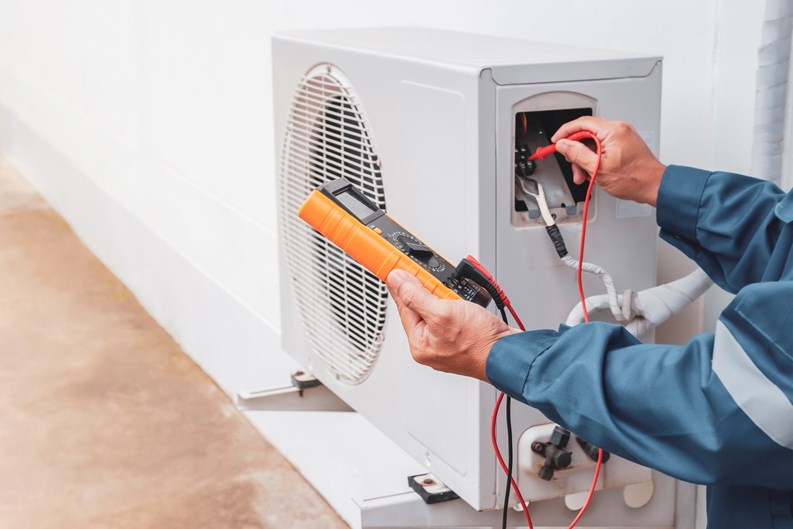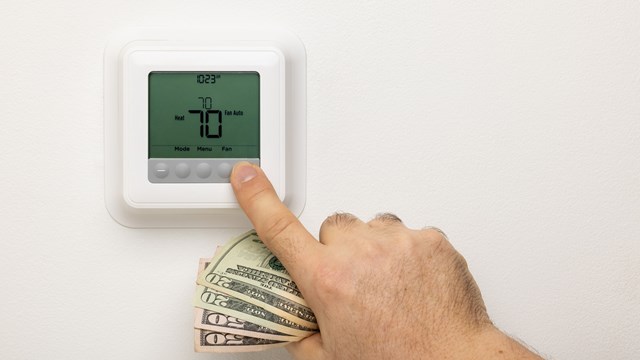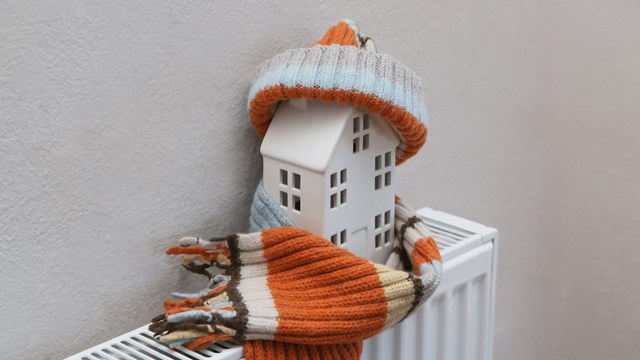When my grandfather came to New York City from Hungary in 1924 he lived in a rooming house on East 78th Street on the then not-very-fashionable Upper East Side of Manhattan. When temperatures soared in the summer, the family slept on the fire escape in hopes of catching the slightest breeze.
The proliferation of indoor air conditioning changed all that—at least in most places. Widespread use of individual room air conditioners in the United States really began in earnest after World War II. In 1947, 43,000 window units were sold in the U.S. By the early 1960s, air conditioning had become ubiquitous in commercial buildings, and was becoming increasingly common in residential settings. Central air conditioning became standard in new homes in the 1970s—and as the decade advanced, many new multifamily residential buildings also featured central air cooling and heating systems as well. The
acronym HVAC was coined around that time to refer to heating, ventilation, and air-conditioning.
In recent years we have seen the continuing evolution in HVAC systems. Interestingly, technology has to a great extent brought air cooling systems back into individual units from former building-wide approaches. (But more on that later.)
Types of A/C Systems
“HVAC systems take on several different forms,” explains Daniel Mahr, president of Aalanco Service Corporation, an air conditioning specialist located in Westborough, Massachusetts. “There are central systems that take care of heat and air conditioning for the entire building, providing heat and AC generated by boilers in the basement or in a rooftop mechanical room. The units could have either baseboard radiation or fan coils that blow air. Units may have zone valves on the baseboard or fan coils that are controlled by an individual thermostat.
“Another technology for central air conditioning is to have chillers for cooling on the roof or out back,” Mahr continues. “In this case, individual units would have fan coil units and individual thermostats to control the fan coils. There are also central systems with boilers and cooling towers to provide a water source heat pump loop. This is known as a warm water loop system, where 80 degree water is delivered year round. Each individual unit would have a water source heat pump in the unit to provide both heating and cooling and where each heat pump has its own thermostat. Finally, ductless split systems can provide heating and cooling within each unit. This usually has the evaporator on a wall and a condenser sitting outside on a deck or patio.”
Airvolution
Central air cooling systems arrived in the era of ‘cheap’ energy. With increasing costs over time for both heating and cooling, and with the imperatives of the climate change crisis staring property owners—including co-op and condominium communities—in the face, priorities for HVAC systems have changed, and continue to evolve.
“In terms of the delivery of air conditioning and heating in and of itself,” says Craig Gallagher, president and founder of Lightning Mechanical, a regional provider of HVAC services in New York, New Jersey, and Massachusetts, and located in Maplewood, New Jersey, “the principals haven’t changed, but the methods have. The first HVAC systems ran off traditional boiler and chiller plants with fan coils. This dates back to the 1970s. In the mid 1980s, we started using water source heat pumps. Each individual unit each had a heat pump water source connected to the building’s heat injection boiler and water tower. About 20 years ago we got into the variable refrigerant flow or variable refrigerant volume product market, known as VRF/VRV. Within that framework there are two options: water cooled or air cooled condensers. The water cooled option is a good retrofit for water source heat pumps because in most cases, existing infrastructure can be retained. The air cooled option is a condenser ‘farm,’ which would have to be placed on the roof or adjacent to the building. The in-unit equipment would be heat pump modules. All three technologies are still in use today for new construction—however, with the push toward electrification in the Northeast, the VRF technology fits the needs of both developers and the Department of Energy’s current criteria.”
“Methods today are driven by energy costs, green initiatives, and other external climate factors,” Gallagher continues. “What does it cost to deliver electricity, natural gas, etc.? The U.S. Department of Energy along with ASHRAE, the American Society of Refrigeration Heating and Engineers, are the main consultants for these standards. Climate change, building occupancy, LEED standards —all of this comes into play whenever we are designing or retrofitting a building, as well as the change in refrigerants needed to reduce operating costs and non-ozone depleting refrigerants.”
The result of all of this advancement in materials and methods is that over the last few decades, as the cost to both our pocketbooks and our planet have become more painfully obvious, is a move away from expensive, carbon fuel-based systems to more economical and climate-friendly individual unit solutions.
According to Pete Kelly, owner of the Fresh Air Company, located in Manhattan, systems are becoming increasingly sophisticated—both in terms of how they’re manufactured and installed, and how they’re controlled. “It’s yes to phone apps,” he says. “The move today is to wifi thermostats. They enable you to control your system [with your phone] from the airport, so when you get off the plane at JFK, your apartment is cool when you get there.”
Kelly also reports that “Con Ed is providing low-cost wifi thermostats to their customers to save money on their in-home systems.” There’s a catch, however. “These thermostats also enable Con Ed to shut down your AC unit during periods of high demand,” says Kelly. “That means that if…there’s an overload of the circuitry in your area and Con Ed wants to prevent any overload brownouts or blackouts, they can access NEST thermostats” —that’s the specific brand Con Ed distributes to those who want them—“and can shut them off to create less of a load on their circuitry. Con Ed is literally in your home. You give them permission when you take the thermostat from them.”
Mahr notes that for older buildings, “The biggest change has been with the move towards ductless split systems. These are much more energy efficient than other forms of heating and cooling—but the challenge for many buildings is upgrading their electrical infrastructure to handle the new type of equipment. Phone apps have allowed better control.”
Kelly points out that newer systems need to conform with federal energy requirements. The Seasonal Energy Efficiency Ratio (SEER), the seasonal energy efficiency code, provides for required cooling at a much lower operating cost. This can be achieved with the use of scroll compressors, more efficient cooling coils, and electronically commutated motors, known as ECMs. The motor will lower capacity to use less energy as the apartment cools or heats.”
Care & Maintenance
Like any building system, HVAC systems require regular care and maintenance. Different systems may require different types of maintenance on varying schedules.
“Maintenance is critical in all AC systems to prevent mold growth—especially in ductless split systems,” says Mahr. “This is very time consuming, and unfortunately we’re seeing some property managers not give enough attention to maintenance in these environments. In the past, you could provide AC maintenance for an entire multifamily property in a few days. Now it could take over a month.” Nevertheless, that maintenance is critical to the continued function of the system.
On mold, Kelly notes that “mold is in our lives—it exists everywhere. In terms of building-wide systems, every HVAC unit should be seen twice a year overall and once a year for cooling maintenance only.” An inspection entails replacing filters, checking the voltage and amperage, checking the operating pressures, cleaning the drain pan and line, and cleaning the coil.
Gallagher points out that inspection and maintenance programs should also take into consideration factors like the amount of foot traffic in the public areas of a property, as well as the overall occupancy and the occupants themselves. “In residential markets, pets play a factor as well. Foot traffic brings in dust, which is filtered by HVAC equipment in the common areas. Our minimal maintenance contract is twice a year, and the maximum would be monthly, depending on site and use. No one size fits all.”
And that’s the major takeaway; buildings come in all sizes and configurations, based on their age, construction materials, design, original purpose, and location—and all those factors figure into how the climate inside a given building is controlled to keep its occupants comfortable year-round. Being familiar with your particular HVAC equipment and its upkeep and maintenance will not only help your board and management keep the system functioning smoothly, but can also reduce both your carbon footprint and heating and cooling costs.
A J Sidransky is a staff writer/reporter for CooperatorNews, and a published novelist. He may be reached at alan@yrinc.com.










Comments
Leave a Comment